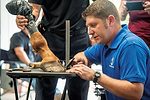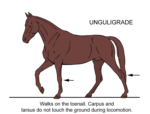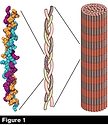Advertise Follow Us
Anatomy
Horse Conformation Determines Best Trimming and Shoeing Approaches
Farriers should abandon one-size fits all solutions to navicular
Read More
Equine Reciprocating Systems: Connecting Tendon to Bone
The third installment of this series examines bone formation and its relationship to the muscle tendon
Read More
How to Make an Open Toe Heart-Bar Shoe
Ohio farrier-veterinarian offers an option to support an acutely lame horse
Read More
Opinion
Mechanical Considerations for Shoeing
Are we hindering performance horses, especially racing Thoroughbreds, by failing to consider the hoof and limb mechanics?
Read More
News and Notes
Standing CT Leads to Previously Undetectable Findings in Horses
University of Madison scientists hope new technology can be used to reduce clinical problems in horses through early screening
Read More
Equine Reciprocating Systems: Interosseous Muscles to the Suspensory Apparatus
In this second in a series, Dr. Deb Bennet continues a discussion of the horse’s forefoot becoming a single digit.
Read More
Understanding Ligaments and Tendons in Horses
In this first in a series, Dr. Deb Bennett discusses the scope of her anatomy lessons and misconceptions she finds with ligaments and tendons.
Read More
Increased Knowledge of the Equine Anatomy Can Help Farriers Improve Hoof Care
The choices farriers make in trimming and shoeing should take into account bones, tendons and other internal structures of the limbs
Read More
Hoof Beats
Hoof Beats: Managing Hoof Distortion in Performance Horses
Trim with the medial toe of the hind foot in mind and support the cannon
Read More













